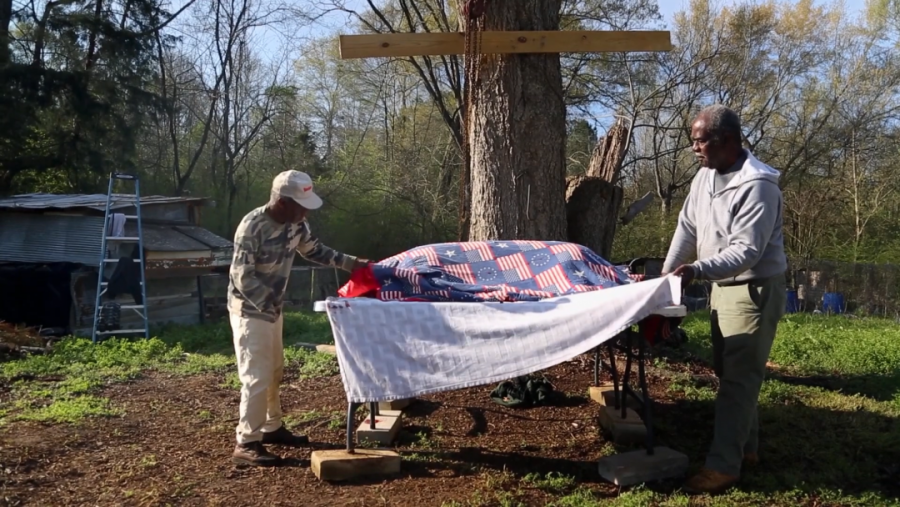“Easter Snap” is not a normal documentary; there is no narration and it isn’t explicitly informative.
No, “Easter Snap” is hardly a documentary at all — it is a piece of visual art, rather than a narrative one. It has more in common with a painting than with any other type of film, and what a beautiful painting it is. Everything in this short film works beautifully. RaMell Ross’s camera work is, quite frankly, gorgeous. It is delicate and deliberate while simultaneously direct and honest. He switches seamlessly from wide, stationary shots to close-up, claustrophobic ones, most of which are framed rather indirectly, focusing on a particular detail of the scene.
The film’s subjects — five Alabama men who are processing a slaughtered hog on a homestead — never acknowledge the presence of the camera, giving the viewer a sense of detachment until, in one scene, one of the men falls down on his back, at which point Ross leaves the camera rolling but sets it on the ground to go help the man up. By leaving those few moments in the final edit, Ross pulls the viewer straight into the world he is filming. We are reminded that Ross is present, though the men never acknowledge him, and that he is an outsider, just as we are, which links us to the scene and places us into his shoes.
Despite the fact that the subjects of “Easter Snap” are shown processing a hog, it is important to note that the film is not what most would consider gory. It does not take place in a slaughterhouse and the animal is already dead when the film opens. It sounds off-putting, and perhaps it is to some extent, but that is also its point: to shine a light on a way of life that is at once proximate and distant from our own. If you are able to stomach it, then there is no reason to miss out on this film, especially given its short length and the fact that Ross has allowed it to be streamed for free online.
A version of this article appeared in the Monday, Oct. 7, 2019, print edition. Email Nicholas Pabon at [email protected].


























































































































































